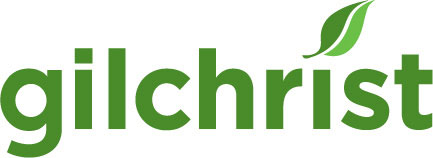Fighting for Health Equity through the Delivery of Elder Medical Care
Fighting for Health Equity through the Delivery of Elder Medical Care
People suffer and die unnecessarily in our region and country due to health inequities fueled by poverty, racism, unequal access to care and other factors. This is a devastating, indisputable truth measured in both data and deaths.
This truth also continues to be measured in the tears of children, as Wayman Scott, Gilchrist’s associate director of Diversity, Equity and Inclusion and Community Relations, knows firsthand.
While providing grief counseling at a Baltimore City public school not far from his own home, he routinely met with students weeping over the loss of loved ones due to chronic health conditions – conditions that could have been medically managed.
“If they had received better care, some of them might still be living with these young people,” Scott says.
At Gilchrist, Scott is doing all he can to connect people with the better care they need and deserve – and, ideally, stop some tears before they begin to fall. That starts with building relationships and trust, he says.
In-home elder medical care
Scott devotes much of his work life to fighting for health equity in Baltimore City. Last year, GBMC and Gilchrist received a multi-year, $1.5 million grant from the Maryland Community Health Resources Commission to address health inequity in and around the Jonestown area in East Baltimore. As part of the campaign, Gilchrist’s elder medical program provides in-home medical care and other related services to eligible seniors.
Scott’s focus is on not just informing the public about the program, but cultivating their confidence in the program.
“There is widespread distrust regarding the overall healthcare establishment, that’s deeply rooted in history,” he says, citing discriminatory policies such as redling. “We have to establish trust and relationships – block by block, individual by individual.”
That’s exactly what Scott is striving to do, meeting with people in churches, community organizations, and other settings. He’ll go anywhere to connect people with the quality, accessible care available to them. A key to success, he says, is the cultivation of cultural understanding and humility.
Shaping the past and the future
Scott’s dedication to racial equity is apparent in his personal life as well as his professional life. During the pandemic, he re-engaged a childhood hobby, sculpting, and shaped it into what is now a solo exhibition at Baltimore Clayworks featuring Frederick Douglass, the great abolitionist and social reformer, among other pieces. After the show concludes, he hopes to donate his work of Douglass to the Frederick Douglass-Isaac Myers Maritime Park Museum in Baltimore City in Gilchrist’s name as part of his drive to build trust.
“I hope my artwork can help support my health equity work. I hope the young Douglas piece inspires people in the work of equity. Gilchrist is working to build health equity in Baltimore City. Frederick Douglass fought for racial equity and freedom, and he was based out of Baltimore City. Donating this piece to his museum will give people a chance to see it and get inspired and maybe get curious about Gilchrist or elder medical care,” Scott says.
To learn more about Gilchrist’s elder medical program, click here. For more information about Scott’s current exhibition, click here.


